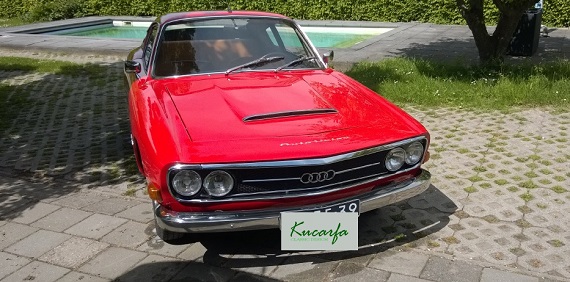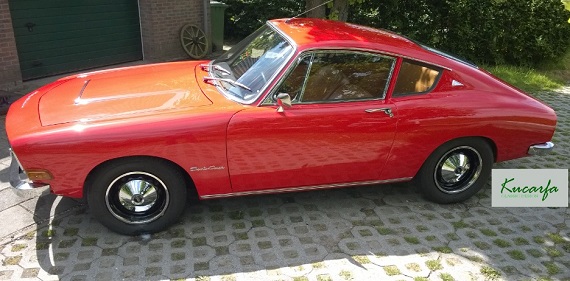For some time, the fate of Audi seemed sealed. Post World War II, Auto Union GmbH’s production was focused on the DKW automobiles that fit into the European economic situation much better than the pre-War luxury cars from Horch and Audi. But the market was changing, and Auto Union launched the very pretty 1000SP Coupe and Convertible. But, there was no denying that the 1000SP looked like a 1950s car in a 1960s world. Audi’s production would really have to wait until the launch of the C1 chassis in 1968; prior to that, some re-badged DKW models wore the Audi name but sold only in small numbers. The C1 would prove to be a pretty popular model, though, and the new 100 model would be available as both a sedan and as a 2-door “Coupe S” model. The lines of that model, as with the 1000SP, mimicked more expensive and famous cars such as the Fiat Dino and Aston Martin DBS. It was a pretty large departure from the mini-Thunderbird look of the 1000SP and much more modern. But, it appears that there may have been a missing link developed in the mid-1960s:
Tag: 1000S
If you’ve been following my 6-part documentary on the Silver Arrows, you’ve seen the four rings of the Auto Union pop up. Now synonymous with Audi, the Auto Union was in fact four different companies that banded together, much like the Volkswagen Group of today. Like the Volkswagen Group, they had a range of cars; Horch for ultra-luxury, Audi was the sportier gentleman’s car, Wanderer covered the middle range and the entry level products and motorcycles were covered by DKW. All of the companies, independently, had significant history, but as we’ve seen in the Silver Arrows documentary, the depression years in the 1920s and 1930s meant that just like Daimler and Benz, the Auto Union was a partnership formed out of necessity for survival in a market where few cars sold. However, as we’ve also seen, the massive investments in infrastructure and breaks on taxes meant that the automobile industry was experiencing a big push by the mid 1930s, coupled with new technology and aerodynamic designs. One of the most promising designs for the Auto Union was the DKW F9; a versatile, aerodynamic small car, it resembled the KdF “Volkswagen” (Beetle) prototypes but was more refined. However, the outbreak of the war stalled the project, slated to launch in 1940. As with other similar projects by German automobile companies, the remnants of the company picked up the project in the late 1940s, and the “new” DKW F91 project rolled out in 1953 as the DKW 3=6 “Sonderklasse”. With a .9 liter two stroke inline-3, the performance wasn’t going to shock you but it was a cleverly packaged car and sold well. It was replaced in the late 1950s by an updated version, now named the Auto Union 1000; updated lightly and with more power from the now 1.0 liter motor, it was available in 5 different configurations and was the basis for the much loved but rarely seen 1000SP roadster – the mini-Thunderbird. Today’s example is an interesting 1962 coupe that apparently was converted into a cabriolet at some point:



